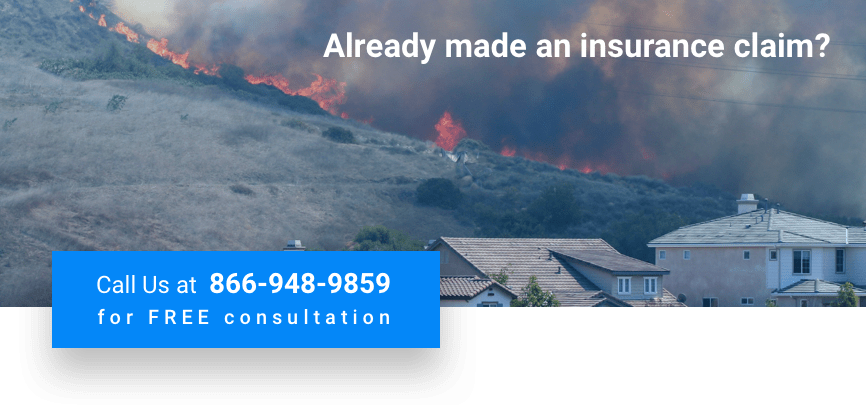California Wildfire Alert!
As wildfires continue to rage in Northern and Southern California, J&Y Law is closely following developments as to the cause of the twin blazes and the potential liabilities that may ensue.
Currently, the so-called Camp Fire near Chico has so far burned through over 115,000 acres, and destroyed 6,453 residences and 260 commercial structures, making it the most destructive fire in state history. The fact that it has taken at least 29 lives also makes it one of the deadliest. Meanwhile, the Woolsey Fire in Los Angeles County has torched more than 91,500 acres and killed two people. Finally, the Hill Fire in Ventura County has burned more than 4,500 acres, but it is 90 percent contained. Sadly, over 300,000 people have been forced to flee their homes across the state.
What started the California fires?
Coming on the heels of several large blazes earlier this year and in 2017 (see below), conditions in the state — dry underbrush, the Santa Ana Winds, and hot temperatures — have helped trigger the three blazes in November.
At this juncture, the cause of the Camp Fire, Woolsey Fire and Hills Fire remains unknown. Southern California Edison (SoCal Edison) has reportedly told authorities an electrical circuit had an outage close to where the Woolsey blaze ignited. While there is no evidence tying the events together yet, the fire was reported just two minutes after the outage.
In addition, investigators continue to probe the Camp Fire, with power equipment being considered as the potential cause. It has been reported that PG&E told regulators that a high-voltage power line in the vicinity “experienced a problem” close to where the fire started.Of course, the seasonal Santa Ana winds, gusting up to 60 mph, have helped to spread the flames, and the National Weather Service warns that California will continue to face “extremely critical fire conditions.”
If The California Fires Have Affected You, Help Is Available!

Anyone that has been impacted by the 2018 California Wildfires should immediately contact J&Y Law. Our wildfire attorneys will explain all of your rights and explore all of your options for compensation, including potential personal injury lawsuits against SoCal Edison and PG&E. We can help you if you’ve suffered property damage or if you have sustained an injury due to these horrific fires.
For a free legal consultation with a wildfire injury lawyer serving Los Angeles, call (877) 735-7035
Northern California Wildfires
 Back in October 2017, areas in North California became engulfed in flames by a series of 250 wildfires due to down power lines. In conjunction with strong winds and lack of precipitation in the area, these wildfires spread rapidly throughout the area. These fires grew to be some of the most devastating fires in California history. Governor Jerry Brown declared a state of emergency as 90,000 people were evacuated their homes, 185 hospitalized and 44 killed.
Back in October 2017, areas in North California became engulfed in flames by a series of 250 wildfires due to down power lines. In conjunction with strong winds and lack of precipitation in the area, these wildfires spread rapidly throughout the area. These fires grew to be some of the most devastating fires in California history. Governor Jerry Brown declared a state of emergency as 90,000 people were evacuated their homes, 185 hospitalized and 44 killed.
How Did The October 2017 California Wildfires Start?
During this time, Pacific Gas & Electric (PG&E) reported that 44 out of the 49 counties were under red flag warnings, which is a forecast warning by the United States National Weather Service indicating that weather conditions are prime for wildfire, combustion, and rapid spread. Prior to the outbreak of the wildfire, emergency services responded to reports of downed power lines and transponder explosions, which PG&E was responsible to maintain. The sparks from these down lines and explosions hit nearby brush which began the domino effect.
PG&E reported that winds earlier in the day that were of hurricane speed damaged the equipment, causing the downed lines and transponder explosion. However, other reports contradict this statement stating that the hurricane speed winds began later in the day after the power lines had already fallen.
Can PG&E Be Held Liable?
Over the course of many years, it has been proven that PG&E has neglected their infrastructure and equipment. The company has been responsible for other wildfires in California – according to an independent investigation by Cal Fire, PG&E is responsible for the fires that started in October 2017.
Los Angeles Wildfire Injury Lawyer Near Me (877) 735-7035
Southern California Wildfires
Two months later in December 2017, 29 more wildfires broke out in Southern California, six of which caused the majority of the damage. Governor Jerry Brown declared a state of emergency as these fires led to 230,000 people being evacuated from their home, 184 destroyed homes, traffic disruptions, school closures, hazardous air conditions, and power outages. One of these fires, The Thomas Fire, is considered the largest fire in California history, and for good reason. The Thomas Fire spread to 96,000 acres, making it nearly double the size of Washington, DC.
Since these wildfires destroyed over 307,900 acres of land, the ground lost stability due to the fact that there were no longer any tree roots, which made it vulnerable to mudslides. In early January 2018, mudslides began affecting Santa Barbara County, with debris, boulders, and tree branches moving at a speed of 20 miles per hours. The mudslides caused 21 deaths, 28 injuries, and 2 missing persons, and destroyed 129 homes and 307 other properties.
How Did The December 2017 California Wildfires Start?
As of this date, the exact cause of the December 2017 Wildfires is unclear. However, it has been reported that Southern California Edison (SoCal Edison) is under investigation for how their power lines played a part in causing some of the fires. It has been noted that SoCal Edison’s electrical infrastructure failed at two locations where subsequent fires broke out and merged, leading to the Thomas Fire. Witnesses also testified that they saw transponders exploding in these locations.
Can Southern California Edison Be Held Liable?
Due to California’s inverse condemnation law, if a property was damaged by the fires in Southern California, you are entitled to compensation whether SoCal Edison is found negligent or not.
Who Can File A Lawsuit?
Anyone that was impacted by a wildfire in the following ways can bring about a lawsuit against PG&E or Southern California Edison:
- You or a loved one suffered a personal injury from the fire
- Your loved one died from the fire
- Your house or other personal property was damaged in the fire
- Your business or other business property was damaged in the fire
Benefits of Filing A Lawsuit
Although many people have medical insurance, homeowners insurance, and other business insurance, most of the time the amount reimbursed is a fraction of what is truly needed. You are entitled to compensation for the following:
- Destruction of your home – You are entitled to be reimbursed with enough money to rebuild your home to the same condition it was prior to the fire.
- Loss of Possessions – There is no price that one can put on family heirlooms, however you are entitled to receive compensation if they were damaged in the fire.
- Medical Expenses – You are entitled to compensation for your past, current, and future medical treatment as well as compensation to cover lost wages and future earning potential.
- Emotional Distress – Realizing that all of your possessions are gone and that you are homeless has shown to cause post-traumatic stress disorder (PTSD) – you are entitled to compensation for your emotional distress as well as any medical treatment needed to handle the situation.
- Business Income Losses – You are entitled to compensation that covers the expenses of any destroyed inventory and/or lost income from business interruption.
Contact Our California Wildfire Injury Attorneys
If you have been a victim in a California wildfire and are unsure of where to turn, reach out to one of our wildfire injury attorneys. We know that dealing with alternative housing, transportation, and emergency services can be frustrating and overwhelming. It is our goal to help you through the difficult legal process and work with you to obtain a maximum settlement to secure a financial future and get you back on your feet, even if that means going to trial to fight your case. Contact us now!
Call or text (877) 735-7035 or complete a Free Case Evaluation form
